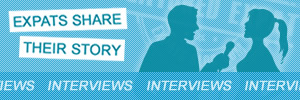- Home » Expat Contests » Expat Blog Awards 2013 - Japans Five Most Fantastic Festive Events
Japans Five Most Fantastic Festive Events
By: Greg Goodmacher
Under the mythical nation of “homogeneous Japan Inc” lies a reality of unique events that merge sex and death, fire and snow, cooperation and competition in perspectives that cannot be experienced in just one place or during one visit. That’s why Japan never stops blowing the minds of expats in Japan, no matter how long we have lived here. Far from the stereotypical images of Japan, distinct festivals and festive events, such as Komaki’s Penis Festival, Koide’s International Snowball Fight, Nagasaki’s explosive Shoronagashi, Matsumoto’s Fire Festival, and Hamamatsu’s Kite Festival, introduce multifaceted Japanese history and culture to the investigative traveler.Honen Matsuri, or the Penis Festival (info)
The first visit to the Penis Festival in Komaki, Aichi Prefecture, is a shocking experience for both Japanese residents and foreign travelers, even though fertility rites are celebrated worldwide. The Honen Matsuri, its real Japanese name, hides nothing behind metaphors. Wooden and rock penises are prayed to, vigorously rubbed, enthusiastically shaken, touched gently, and reverently carried in a large parade with over 100,000 attendees. The main penis of the festival, about two meters long, is made of rock-hard, heavy wood. It requires teams of men to lift, shake, and carry along the parade route that starts at Tagata Shrine.
Some men rub the ends of phalluses on display and then briefly touch the fronts of their pants to pass the power of fertility into their own members. Many women, wishing to have children, also attend in hopes of having a baby afterwards. If they give birth, they should return the next year to express gratitude. Farmers also attend in hopes of a prosperous harvest. The Honen Matsuri means many things to different people. It is a fertility festival, a harvest festival, or a wild public party, depending upon your viewpoint, with a history of over 1,500 years. Souvenirs of the festival are, surprise, based on sexual organs. Some of the most popular souvenirs are candy penises and vaginas. Every year, this phallic event takes place on March 15. Komaki is close to Nagoya City and public transport is easily accessible.
Shoronagashi, Nagasaki’s Way to Celebrate the Departed (info)
While the Honen Matsuri celebrates the start of life in spring, Nagasaki’s Shoronagashi, held every August 15, prepares the souls of those who have died in the past year for their journey from Earth. Millions of explosions and a winding parade of spirit boats help the dead to shed their mortal coils. The entire city sounds like a warzone during the parade. Earplugs are a necessity. Without them, your hearing would be endangered.
Nagasakians often prepare weeks or months in advance to create spirit boats that range from one-meter long boats to boats over twenty meters in length. One monk that I know, spent more than the Japanese equivalent of twenty thousand American dollars to have a handmade boat made for his deceased father from sculpted wood and decorated with silk lamps, elaborate paintings, and fine Buddhist inscriptions. Approximately forty people marched along and pushed his spirit boat.
Boats are created in ways to represent the personalities of the humans whose spirits they embody. A boat for a politician was made in the shape of the Japanese Diet. One for a small child had his baseball glove and favorite Mickey Mouse doll at the front. Some boats have photographs of the departed on the sides.
Nagasaki is a hilly city with numerous crooked streets that wind from numerous hills toward the flat city center and bay in the middle. Shoronagashi starts with sporadic explosions of fireworks that echo in the distance. Then as more and more people from separate sections of the city march downward, carrying their spirit boats, the explosions increase in sound and intensity. For this march, each family may purchase hundreds to thousands of packs of firecrackers and fireworks that are constantly set off.
The marchers converge on the main roads of Nagasaki, many closed to automobiles for this event. The cacophony of the fireworks is felt and heard. Packs of firecrackers are lit and tossed. Numerous marchers and parade watchers are burned, scraped, or bruised each year by explosions. By this time, night has descended and the parade can be seen from a distance by the brilliant multihued blasts of thousands of simultaneous fireworks.
At the end of the parade route, huge metallic jaws attached to a giant crane descend, grab, and squeeze each boat into smithereens. The spirits are released and start on their next phase of existence. The surviving friends and relatives head toward home, restaurants, or bars to continue their own lives and to celebrate their memories of their dear departed.
Organized Quirkiness, the International Snowball Fight and Costume Contest (info)
For a taste of the spirit of levity and quirkiness that exists in Japan, participate in the International Snowball Fight. The tiny town of Koide, Niigata, in the heart of Japan’s “snow country,” hosts this event, called Yuki Gassen in Japanese. Everyone who is willing to wear a costume, endure below zero temperatures, and throw snowballs at others is welcome. If you travel across Japan, you will see that Japanese people, in general, dress and act conservatively, but here the social restrictions dissolve, or maybe there is social pressure to be odd for this event.
No matter the reason and no matter how cold it is, you might see Japanese men wearing bikinis or dressed as anime characters, women dressed as the Mario Brothers, children costumed as horses. There appeared to be no limits the year I went. There were teams of snowmen, reindeer, aliens, ghosts, movie stars, dead people, ducks….
The madness is organized with Japanese efficiency and silliness. Official snowball fighting courts are fenced off. The matches follow specific rules. The winners of the first series of matches play against each other until only one championship team remains at the end. Players are instructed to be as dramatic as possible and that gifts for the judges are acceptable. I observed people drinking sake before, during, and after matches. Costumes are judged as well.
Not only is the International Snowball Fight a place to throw snowballs like you might have done in your childhood, it is also a perfect place to taste the local dishes and drinks of a remote area of Japan. Neighbors within small regions of Koide constructed small shops from snow. Within them, the residents were doling out bowls of locally produced miso soups, sweet bean snacks, and salted and grilled river fish. There was no charge. A box was displayed into which people could, if they wished, drop a donation. Five Japanese men in their sixties were sitting around a large pot that they were heating over a fire. From that pot, they offered me a cup of hot sake that was brewed in the area. Inside of the sake cup was a small charred river fish, giving the sake an unusual taste of, well, fish. There were also small stalls selling locally produced smoked duck, curry, grilled sausages, and much more.
Koide is a part of Uonoma City, Niigata Prefecture. Although, it is in a fairly unknown to most foreigners, you can get there from Tokyo in less than two hours if you take the Shinkansen and a taxi. This area is famous within Japan for its excellent ski resorts and hot springs, so there is a lot to do before and after the snowball fight.
Fly Back in Time to the Hamamatsu Kite Festival (info)
Competitive kite festivals are held every year in various parts of Japan, but the most fantastic clash of kites is the Hamamatsu Kite Festival, Hamatsuno Tako Matsuri. The energy of the battling locals is palpable as soon as you walk onto the field of battle.
This three-day festival takes place on the coast of Hamatsu City, Shizuoka Prefecture. Around 150 neighborhood teams of kite fliers fight against other neighborhood teams for domination of the skies with monster kites more than four meters across. These are heavy kites that require the physical strength and coordination of at least five or six people. The hemp strings are five millimeters thick, and the bamboo spars are wider.
Kite battles in Japan end when the other kites are demolished. One way to destroy your opponent’s kite is to carefully fly your kite so that your string cuts the string of the other kite by friction. In some competitions, the strings are rubbed with wax and then bits of broken glass are inserted into the wax. These glass-laden strings can quickly cut the opponents’ kite strings.
Kites have a long history in war, peace, and myth in Japan. Kites were used to carry messages during actual battles, as well as to measure distances to the enemy. Folk tales tell of ninja flying into castles or of snipers killing enemies while riding kites. In times of peace, kites have been used to announce the birth of sons.
The atmosphere of the Hamamatsu Kite Festival is that of a historic battle. The locals wear traditional costumes and loudly shout or chant to inspire each other. Japanese drums beat loudly on the sidelines. Kites regularly crash onto the ground, and these large kites are heavy enough to hurt anyone underneath. The leaders of each group passionately cuss or praise the work of their subordinates.
The Fiery Asama Onsen Taimatsu Matsuri (info)
Can you imagine groups of people, many drunken, carrying ten-foot-high torches of burning straw through your hometown? Such activities would never be allowed in my home country because of the risk of injury and of burning down the town, but it is an annual event in Asama Onsen (onsen means hot spring), Matsumoto City, every October.
The locals make ten-foot-high torches from dry rice straw after the harvest season. The tops are lit and the parade through the onsen area begins. Some torches are almost as wide as they are high, so they are too cumbersome for one person to carry. Coordinating the movements of several people while holding heavy and burning objects is no easy task, so the torches move in a swaying manner.
Ashes from the torches blacken the faces, clothes, and entire bodies of everyone carrying the torches as well as anyone nearby. People carrying the torches rub black ashes onto the faces of nearby spectators, which promotes good health. The torch carriers are accompanied by the people playing Japanese drum and flute music.
Not just ashes fall off the torches, orange and red glowing embers drift in the breeze falling all over the parade route, which winds through narrow streets lined with old wooden buildings that could easily ignite.
The parade carries the torches between two shrines in Asama Onsen. The burning torches are offered to the deities of the shrines. One is located on a nearby mountain, and one is in town. These shrines are for Shinto gods of hunting and agriculture. The deities come down to the town shrine in spring, and the locals carry them back to the mountain shrine with the burning torches in autumn.
Luckily for everyone who has gotten dirty during this fascinating festival, Asano Onsen has plenty of hot springs to clean up in. A relaxing bath with the friendly locals is a great way to end this exciting event.
Travelers hoping for personal interactions with the locals in Japan should plan their visits to coincide with special events. Check the websites of the cities and prefectures you will visit for festival details. The famous temples, the bustling cities, the fish markets and other mainstream tourist attractions can be experienced almost any day. Spectators at Japanese festivals are often encouraged to join in various ways, so attending festivals, especially small ones, can give you more possibilities for making special memories and becoming friends with locals. There is much more regional variety in traditions and customs than most people realize, so try and attend several in different areas. Doing so will enrich your cultural experience.
Grab a badge that links to this contest entry!
 Copy and paste code to display this Contest Entry Badge:
Copy and paste code to display this Contest Entry Badge:Contest Comments » There are 3 comments

JD wrote 12
years ago:
Much thanks to the author for not only giving wonderful overviews of some of the more eccentric festivals in Japan, but for also including more practical information, including travel and even safety tips. I definitely look forward to participating in some of these festivals.

Margaret Orleans wrote 12
years ago:
I lived in Japan for 25 years and only learned about the Snowball Fight Festival and the Nagasaki Festival of the Dead from this article. Sorry I missed them. I heartily endorse Greg's recommendation of attending small, local festivals to interact with ordinary Japanese people.

Asako wrote 12
years ago:
I have been to some of the festivals that he wrote about, and they were fantastic! His descriptions helped me remember being there.
 Greg Goodmacher is an American expat living in Japan. Blog description: A blog that explores Japanese culture through the perspective of a hot spring addict. Hot springs are windows into Japanese culture. Environmental issues, lifestyles, values, tourism, and other important topics are touched on, too.
Greg Goodmacher is an American expat living in Japan. Blog description: A blog that explores Japanese culture through the perspective of a hot spring addict. Hot springs are windows into Japanese culture. Environmental issues, lifestyles, values, tourism, and other important topics are touched on, too.





